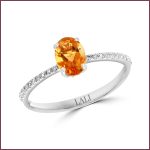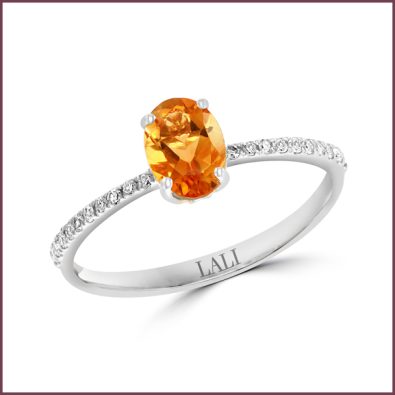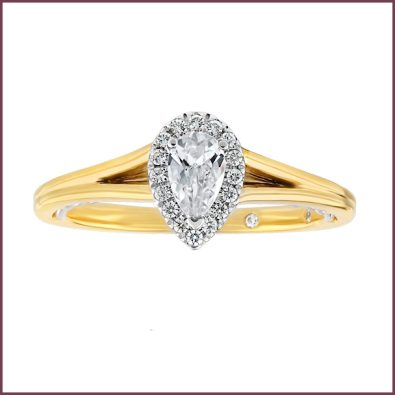The Lab Grown Factor
Representing about 1% of the current market, lab-grown diamonds are expected to take off during the next few years, with Morgan Stanley forecasting in a July 2016 report that the category could capture 15% market share in gem-quality melee diamonds, and 7.5% share in sales of larger diamonds by 2020.
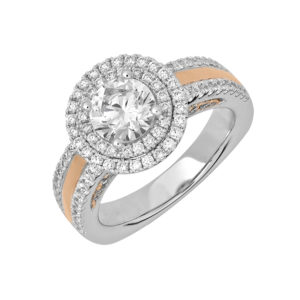 More brand developments are launching to consumers with lab-grown diamonds for engagement and wedding rings, and fashion jewelry styles. The category is organically growing, cites Marty Hurwitz, CEO of the Los Angeles-based MVI Marketing. “There have been issues on the supply side that are starting to catch up to the growing demand with improved technology.”
More brand developments are launching to consumers with lab-grown diamonds for engagement and wedding rings, and fashion jewelry styles. The category is organically growing, cites Marty Hurwitz, CEO of the Los Angeles-based MVI Marketing. “There have been issues on the supply side that are starting to catch up to the growing demand with improved technology.”
MVI research conducted in October 2016 of 1,355 consumers nationwide (more than half women, ages 21 to 45) shows nearly 54% are aware of the product, with almost 67% positive about it after reading an introduction. Some 39% said they’d consider a lab-grown diamond center for an engagement ring. Consumers also were interested in other jewelry made with lab-grown diamonds.
One of the main reasons respondents say they like lab-grown diamonds, according to MVI is that they’re conflict free. Others cite that they like that lab grown diamonds do not involve destructive mining practices, no one can tell they’re not earth-mined diamonds, they can get a bigger lab-grown diamond for less, and lab-grown diamonds are new and special.
Chatham, a pioneer in lab created gemstones, has never witnessed in its 75-year-history a more rapidly growing introduction of a new gemstone than lab-grown diamonds, tells Monica McDaniels, communications manager for the San Marcos, California-based brand.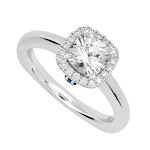
“The buzz surrounding this product has created high demand from consumers and retailers,” says McDaniels. “Monthly sales are multiplying and we’re finding that those jewelers who embrace lab-grown diamonds are doing well. They understand that in today’s market it’s essential to keep up with what consumers want rather than try to dictate to them what they should want. Lab-grown diamonds are there to complement mined diamonds, not replace them.”
Last year, Chatham introduced new bridal designs, and this spring it plans to launch a fashion jewelry line set with lab grown diamond melee. To build awareness, Chatham is expanding its digital marketing, which includes website renovations that will offer a portal to sell loose stones, as well as creating a bigger presence on social media. “To become relevant to the consumer, which in turn makes us relevant to the retailer, we’re ready to establish ourselves within the social media community and grow the brand,” says McDaniels.
Hurwitz thinks independent jewelers and small chains will be the channels that run with this category, noting that what is most important to retailers is buying from a credible source that offers certification, marketing, and training. Branding will be key. According to MVI, nearly 44% of consumers say they’re more likely to buy the product if it comes with a certificate of authenticity from the manufacturer, while about 35% want a certificate from a respected diamond-grading lab.
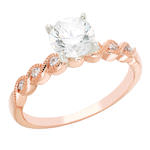 Diamond Response
Diamond Response
According to Bain & Company’s Global Diamond Industry 2016 report, low profit margins in the cutting and polishing segment have heightened midstream players’ interest in synthetic diamonds, but synthetics have gained only limited acceptance among jewelers and end consumers. Bain says while millennials cite “less expensive”, “affordable” and “advanced technology” as purchase drivers, some negative associations still prevail including “fake,” “not real” and “cheap”.
The global rough-diamond demand through 2030 is projected to grow at an average annual rate of about 2% to 5%, reports Bain, and supply is projected to decline by 1% to 2% per year. “This forecast reflects fundamental supply and demand factors rather than short-term fluctuations or unforeseeable long-term macroeconomic shifts. The lower range of the outlook for demand growth incorporates a possible partial substitution of demand for natural diamonds by synthetic diamonds. The short-term supply demand balance will depend heavily on the behavior of major producers and market pipeline efficiency.”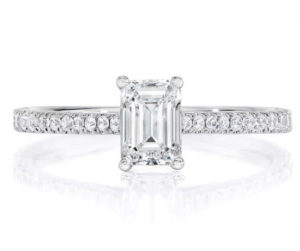
Designer Phyllis Bergman with Mercury Rings, division of Interjewel Group, New York believes lab grown diamonds will have some impact on the diamond business, recognizing that there is a customer for it. But she believes diamond manufacturers and retailers must do their job to tout the story of natural mined diamonds. “Tap into programs like ‘Diamonds Do Good’ through the Diamond Empowerment Fund, and Diamond Producers Association ‘Real is Rare’ campaign. We have to talk about all the wonderful attributes of diamonds.”
Rebecca Foerster, executive vice president, strategic planning and marketing for Leo Schachter Diamonds LLC., New York concurs that regardless of the existence of synthetic diamonds everyone in the diamond industry is responsible to communicate the intrinsic value of diamond. “Lab grown diamonds have their messaging, but natural mined diamonds have a rich story of creating opportunity for people around the world. Not to tell the story is a missed opportunity.” She says there are compelling tools available for retailers to promote diamond’s story.
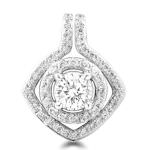 Jeffrey Cohen, vice-president of sales, KGS Jewels, New York says a major concern is that synthetic diamonds are being sold without disclosure, particularly mixed parcels of smaller stones. “We have to do our due diligence in testing material to ensure our diamond supply is clear.”
Jeffrey Cohen, vice-president of sales, KGS Jewels, New York says a major concern is that synthetic diamonds are being sold without disclosure, particularly mixed parcels of smaller stones. “We have to do our due diligence in testing material to ensure our diamond supply is clear.”
Renato Cruz, vice president of product development for Sumit Diamond/Laxmi, New York says people still want diamonds, especially for their engagement rings and he doesn’t see that changing anytime soon.
